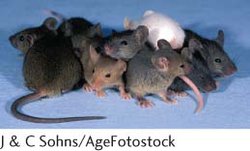CHALLENGE QUESTIONS
Question 29
29.Bipolar illness is a psychiatric disorder with a strong hereditary basis, but the exact mode of inheritance is not known. Research has shown that siblings of patients with bipolar illness are more likely to develop the disorder than are siblings of unaffected persons. Findings from one study demonstrated that the ratio of bipolar brothers to bipolar sisters is higher when the patient is male than when the patient is female. In other words, relatively more brothers of patients with bipolar illness also have the disease when the patient is male than when the patient is female. What does this observation suggest about the inheritance of bipolar illness?
Question 30
30.We have explored some of the difficulties in separating the genetic and environmental components of human behavioral characteristics. Considering these difficulties and what you know about calculating heritability, propose an experimental design for accurately measuring the heritability of musical ability.
Question 31
31.A student who has just learned about quantitative genetics says, “Heritability estimates are worthless! They don’t tell you anything about the genes that affect a characteristic. They don’t provide any information about the types of offspring to expect from a cross. Heritability estimates measured in one population can’t be used for other populations, so they don’t even give you any general information about how much of a characteristic is genetically determined. Heritabilities do nothing but make undergraduate students sweat during tests.” How would you respond to this statement? Is the student correct? What good are heritabilities, and why do geneticists bother to calculate them?
Question 32
32. Eugene Eisen selected for increased 12-
Eugene Eisen selected for increased 12-
